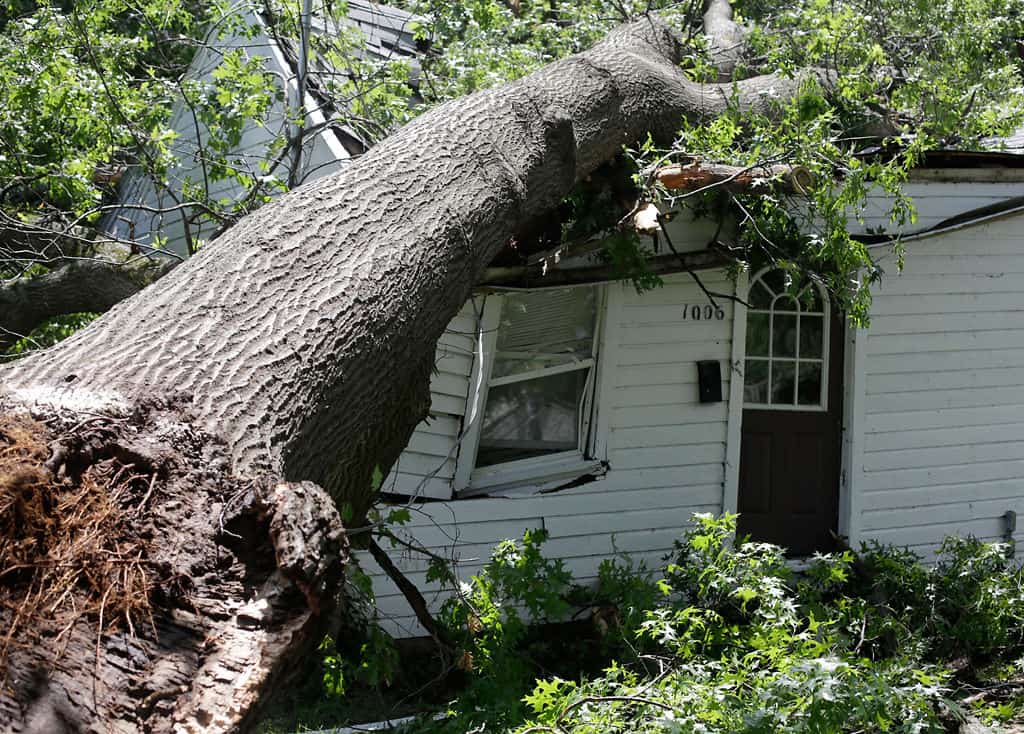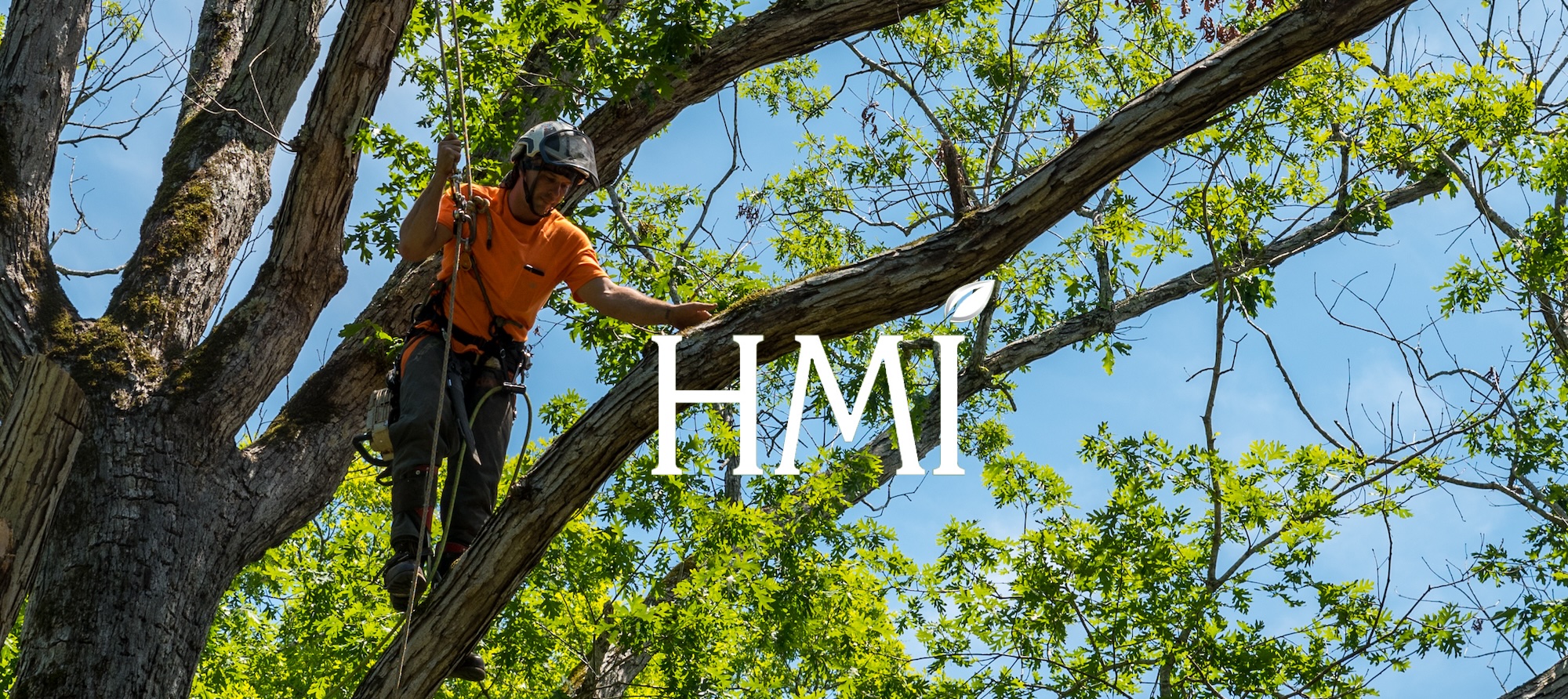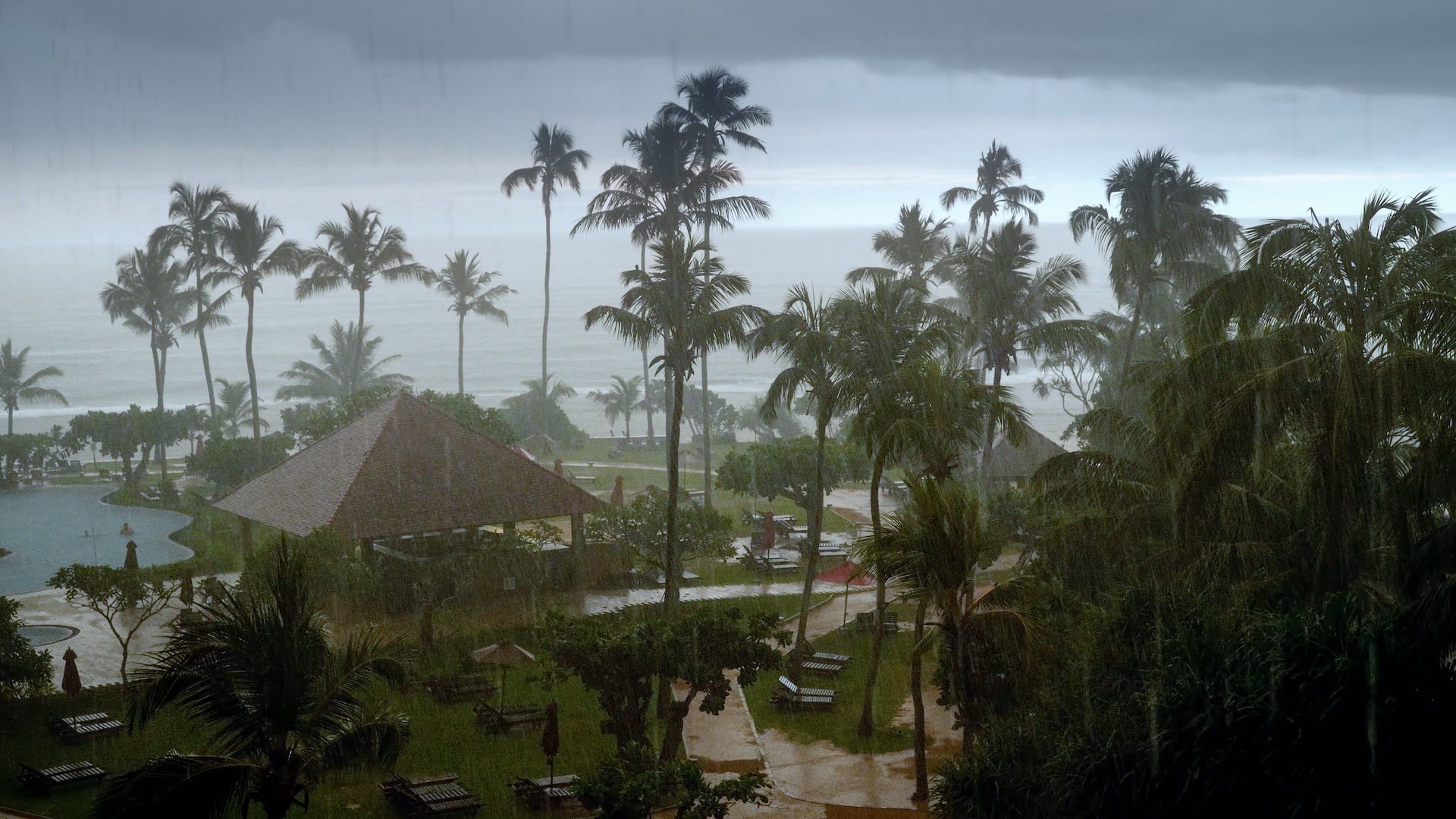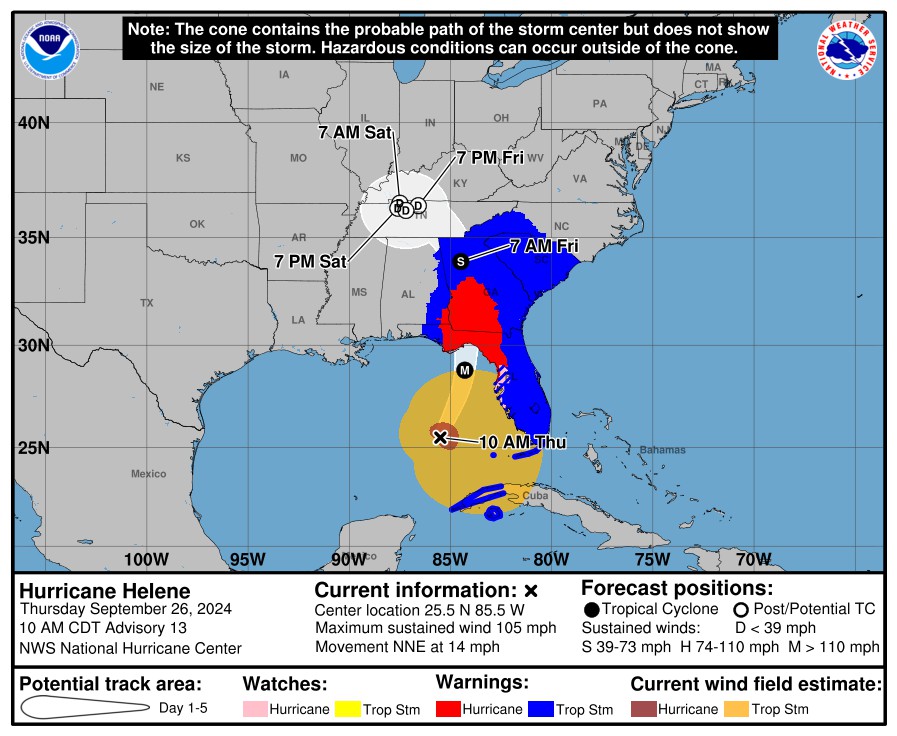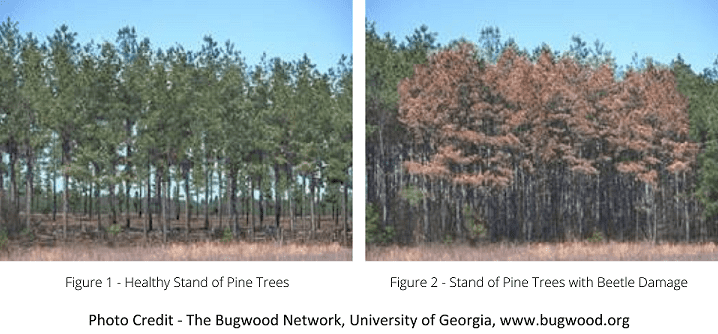By: Patrick Parker
There you sit, enjoying these last sultry days of summer. Yet I feel it’s my duty to remind you: Storms are brewin.’
The National Forecasters at NOAA have predicted the Atlantic coast will most likely have an above-normal number of hurricanes before the season officially ends on November 30th, with three to five of them likely to be “category 3” or higher. AccuWeather has forecasted snowfall for the mid-West and northern Plains as early as October. And what’s in store for the northeast and mid-Atlantic regions? Warmer fall temperatures will be accompanied by rain and windstorms, predicts AccuWeather scientists, with severe weather in November expected for Albany down to New York City and northern Jersey.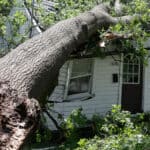
Hopefully, the most severe storms will weaken or blow out to sea before they cause us any trouble. But even storms of moderate intensity can threaten your trees — and the structures and people around them.
 Wind, snow, and ice can snap trunks and branches. The ground saturation from heavy or sustained rainfall, particularly when coupled with high winds, can undermine a tree’s stability. Sometimes, trees topple. And when the failed trees are large ones – trunk diameters in excess of 12” — there is significant risk of property damage and serious injury to humans and pets.
Wind, snow, and ice can snap trunks and branches. The ground saturation from heavy or sustained rainfall, particularly when coupled with high winds, can undermine a tree’s stability. Sometimes, trees topple. And when the failed trees are large ones – trunk diameters in excess of 12” — there is significant risk of property damage and serious injury to humans and pets.
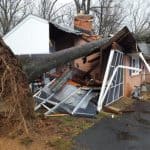
Courtesy of Davey Tree
Why Trees Fail During Storms
A healthy, well-maintained tree is quite resilient in all sorts of conditions. But when it has been compromised by disease or structural deficiencies, stormy weather can cause real problems.
Poor Root System. A tree’s stability depends on the depth and strength of its root system. As the tree grows taller and its crown becomes larger, the roots have to work harder to hold the tree in place. Since roughly 90% of a tree’s roots are in the upper 18”-24” of soil, a poorly-developed, weak, or decayed root system can be severely compromised by even moderate amounts of ground saturation. That can cause the tree to lean, or (during high wind and/or rain events) to fall over completely.
Bad Form. A lopsided crown can cause a tree to lean to one side; a top-heavy crown puts undue stress on the lower trunk and root ball. A poorly-formed union of trunk and branches increases the likelihood that those limbs will fail during strong storms. These structural problems can be particularly troublesome for evergreens during storm season, since those issues adversely affect the trees’ wind resistance. That’s why all it can take is a strong gust of wind and soil saturation for some massive evergreen trees to be uprooted.
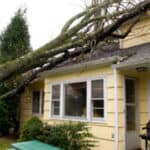 Decay. Decomposing trunk, branch, and root tissue has very little strength and is the most common contributor to tree failure.
Decay. Decomposing trunk, branch, and root tissue has very little strength and is the most common contributor to tree failure.
How to Protect Your Trees from Storm Damage
All trees have the potential for some level of failure from the single or combined forces of wind, rain, snow, and ice. But good arboriculture practices will minimize injury to your trees.
Prune. Careful pruning by a certified arborist is one of the most important aspects of storm damage prevention. The proper trimming of an overgrown or unhealthy tree crown, the removal of dead/dying/diseased/decaying limbs, and the appropriate correction of poor trunk-branch unions, can restore structural integrity and wind resilience, and improve overall plant health.
Support. Tree-support systems such as cabling and bracing can be appropriate remedies for structural deficiencies and instability. When applied judiciously, and maintained correctly, these support systems can prevent the failure of a trunk or limb, extend the life of a mature tree, and provide added stability to newly-transplanted trees while they build supportive root systems.
Remove. Tree removal is sometimes necessary when decay, structural decline, or significant past storm damage makes a tree too dangerous to remain on your property.
Fortify. Keeping your tree healthy is the best defense against all the year-round challenges it faces. Appropriate watering and soil nutrition improves root growth and structure, making the tree more stable.
Now — before the storms hit — is the time to identify and correct potential hazards.
Selective pruning, cabling/bracing, and root nutrition can minimize winter damage, ensure the safety of humans, pets, and structures, and preserve the strength, shape and seasonal beauty of your trees.

